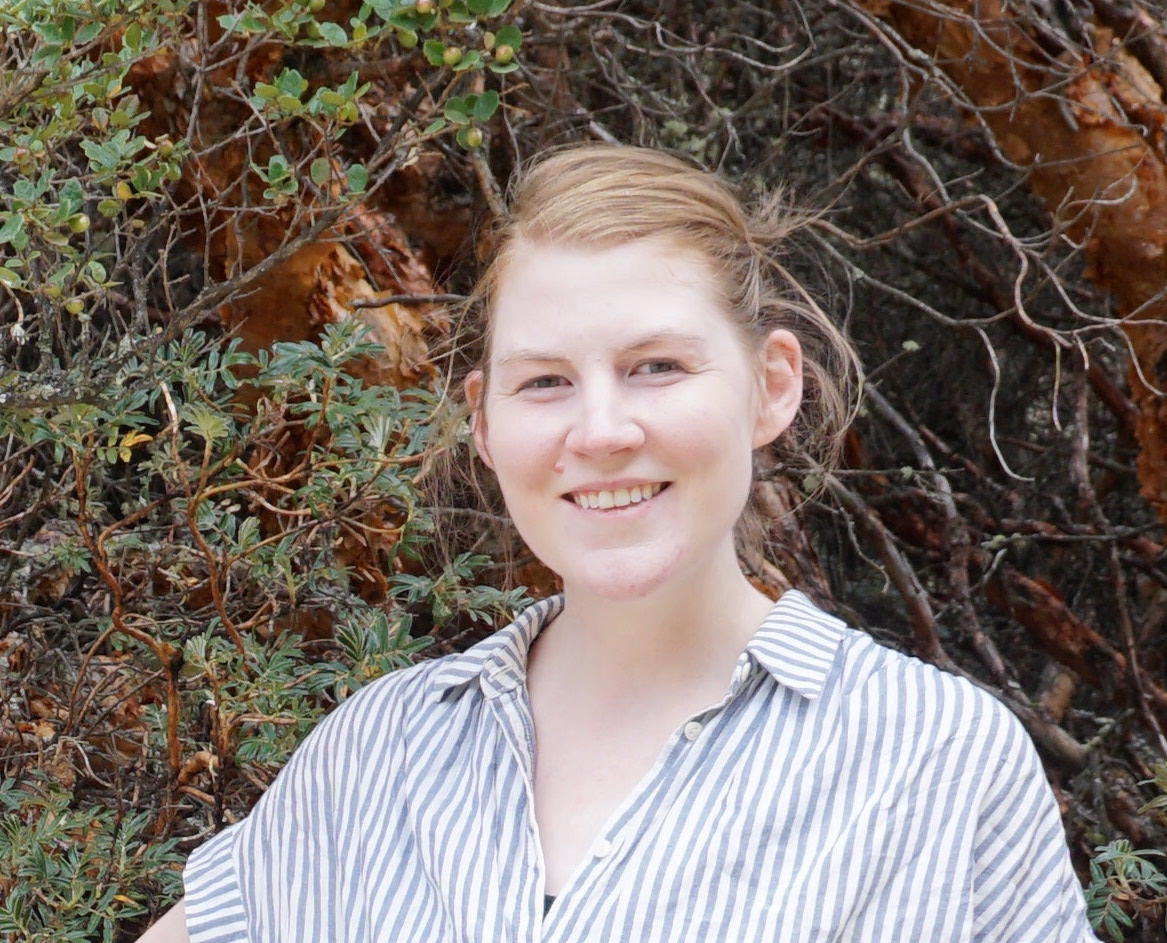Dr. Laura Frost's Research
Our research team is broadly interested in the generation and maintenance of biodiversity
in global biodiversity hotspots. We utilize phylogenomic techniques and flowering
plants groups to understand how species move, evolve, and diversify. This research
incorporates field work, work with preserved specimens in herbaria, molecular laboratory
techniques, and bioinformatics as well as other computational skills.
Areas of interest
Plant systematics
Phylogenomics/herbariomics
Macroevolution
Biodiversity hotspots
Diversification dynamics
Biogeography
What are the relative contributions of discrete speciation and hybridization on diversification?
Net diversification is the result of speciation minus extinction. Speciation is a
fundamental evolutionary process, but study is often biased toward discrete speciation,
or processes by which populations gradually diverge. Hybridization is relatively common
in plants, and has been invoked as an important evolutionary process contributing
to plant species diversity. However, the contributions of hybridization to diversification
are poorly understood. Using pondweeds (Potamogetonaceae)—a submersed aquatic plant
family that readily hybridizes and produces stable, hybrid species—we aim to quantify
how different modes of speciation have contributed to net diversification rates.
Is it faster to move or evolve?
The niche conservatism hypothesis states that it is easier to move than it is to evolve
(i.e., that it is more likely that an organism will achieve dispersal to distant,
but environmentally suitable places than it is that the organism will acquire adaptations
necessary to colonize distinct environmental niches). While it is increasingly accepted
that it easy to move and to evolve, we investigate the relative contributions of moving
and evolving to net diversification in the verbena family (Verbenaceae), a family
of New World tropical origin that exhibits repeated dispersals between American continents
as well as the Caribbean and colonization of multiple different biomes.
For a full listing, visit Laura's Google Scholar page.
Mansaray, J.K., Bedoya, A.M., Frost, L.A., Degreenia, O.C., and Lagomarsino, L.P., 2025. Phylogenetic relationships and the repeated loss of traits associated with sicklebill pollination in Centropogon subgenus Centropogon (Campanulaceae).
Frost, L.A., Bedoya, A.M. and Lagomarsino, L.P., 2024. Artifactual Orthologs and the Need for Diligent Data Exploration in Complex Phylogenomic Datasets: A museomic case study from the Andean flora. Systematic Biology, p.syad076.
Newman, E.D., Rowland, J.B., Hammer, T.G., Frost, L.A., Lumibao, C.Y. and Henning, J.A., 2024. Trade-Offs in Arbuscular Mycorrhizal Fungal Responses to Drought and Salinity Stress in Panicum amarum (United States Gulf Coast). Journal of Coastal Research, 40(1): 51-63.
Frost, L.A., Santamaría‐Aguilar, D.A., Singletary, D.*, and Lagomarsino, L.P. 2022. Neotropical niche evolution of Otoba trees in the context of global biogeography of the nutmeg family. Journal of Biogeography, 49: 156-170.
Frost, L.A., O'Leary, N., Lagomarsino, L.P., Tank, D.C. and Olmstead, R.G. 2021. Phylogeny, classification, and character evolution of tribe Citharexyleae (Verbenaceae). American Journal of Botany, 108(10): 1982-2001.
O'Leary, N., L. A. Frost, F. Mirra, and Moroni, P. 2021. Insights into the Taxonomy of Citharexylum(Verbenaceae): A revision of the South American taxa. Annals of the Missouri Botanical Garden, 106: 167–233.
Lagomarsino, L.P., and Frost, L.A. 2020. The central role of taxonomy in the study of Neotropical biodiversity. Annals of the Missouri Botanical Garden, 105: 405-421.
Lu, M.*, Frost, L.A., O’Leary, N., and Olmstead, R.G. 2019. Phylogenetic relationships of the tribe Neospartoneae (Verbenaceae) based on molecular data / Relaciones filogenéticas en la tribu Neospartoneae (Verbenaceae) basadas en datos moleculares. Darwiniana, 7(2): 305-324.
O’Leary, N., and L.A. Frost. 2017. A new species of Citharexylum (Verbenaceae) in Peru. Systematic Botany, 43(4).
Frost, L.A., Tyson, S.M. *, Lu-Irving, P., O’Leary, N., and Olmstead, R.G. 2017. Origins of North American arid-land Verbenaceae: More than one way to skin a cat. American Journal of Botany, 104:1-10.
Yuan, Y.-W., Sagawa, J.M., Frost, L.A., Vela, J.P., and Bradshaw, H.D. 2014.
Transcriptional control of floral anthocyanin pigmentation in monkeyflowers (Mimulus).
New Phytologist, 204: 1013-1027.



